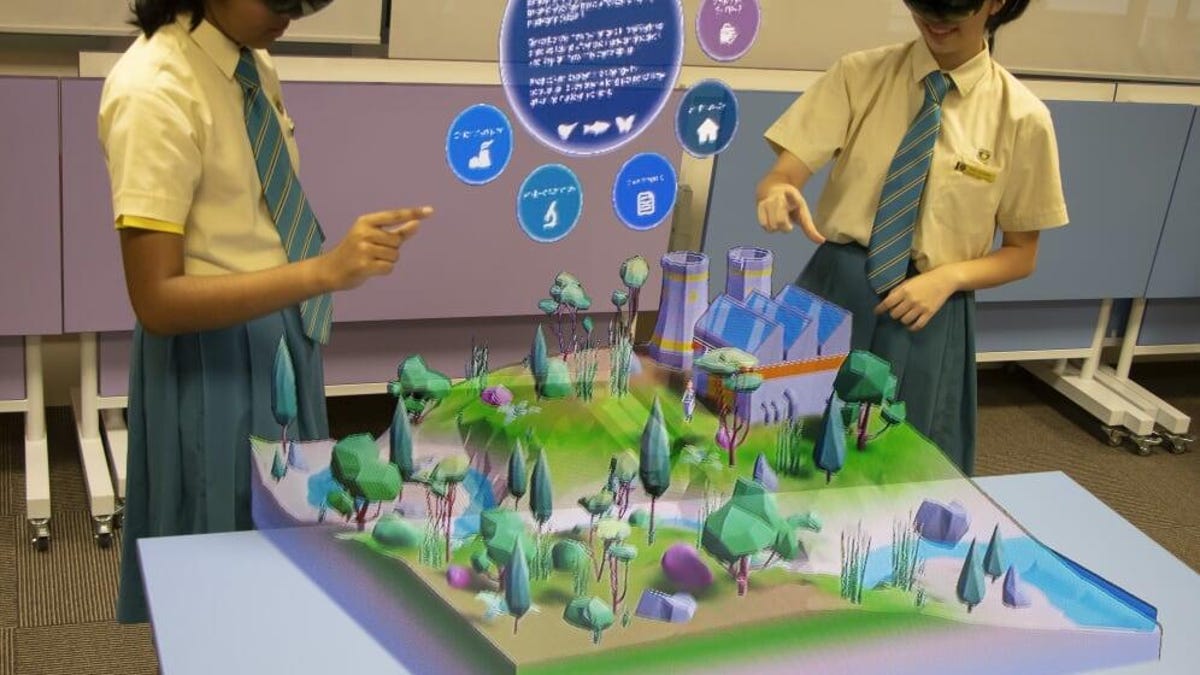A Singapore school is using Microsoft's HoloLens to explore nuclear fallout
Students from the Crescent Girls' School will get to learn about the effects of radiation on biology through mixed reality.

Students from Crescent Girls' School in Singapore exploring a nuclear fallout site.
Ever wish you could see the effects of nuclear radiation on plant and animal life first hand? Some lucky students are living the dream.
Students from Singapore's Crescent Girls' School will use Microsoft's HoloLens to take on the role of ecologists and geneticists as they carry out field work around the site of a nuclear power plant. The mixed-reality device will also let them virtually use equipment such as a Geiger counter and a DNA sequencer.
Dubbed Eco-lysis and made by local mixed-reality startup Serl.io, the two-week module is used in the school's Biology curriculum. Student work in groups of four, where they'll have to co-operate and plan their approach to field work and analysis. Once the experiments are completed, the program generates a report based on what the students have discovered and they can write up their findings based on the results.
I tried out the module and found the experience to be pretty interactive and fun. Some of the activities are simplistic and won't give you a truly realistic experience. But the data generated, such as radiation count or mutations, is real enough that students can learn from it.
The school and Microsoft didn't disclose how much the system costs, but said that they see a lot of potential in the system, and hope to add more modules, such as physics, to the curriculum.

